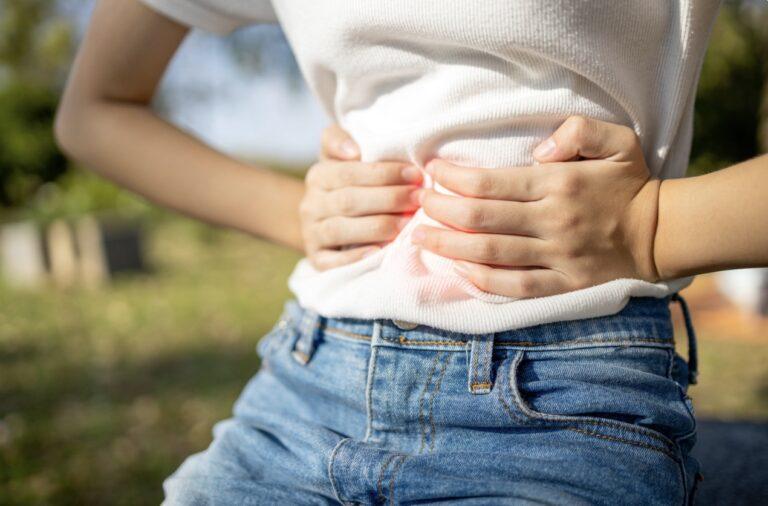Vomiting or throwing up, also known as gastroenteritis, can be an unpleasant and disruptive experience, leaving you feeling drained and uncertain about what to eat. Whether caused by a stomach bug, food poisoning, or other gastrointestinal distress, the aftermath of vomiting often presents a challenge when it comes to restoring your appetite and replenishing your body. However, with the right approach to eating, you can facilitate a smooth recovery and get back on track to optimal health. In this guide, we’ll explore the best foods to consume in your diet after vomiting, along with practical tips to help you navigate the road to gastrointestinal healing.
Allowing your stomach to settle
When you’ve been through the ordeal of vomiting and an upset stomach, it’s crucial to give your digestive system a chance to rest and recover before reintroducing solid foods. During this initial period, focus on consuming clear liquids that can help rehydrate your body and soothe your stomach. Opt for beverages such as clear broths, herbal teas, and sports drinks, which can replenish the electrolytes lost through vomiting. Sip these liquids slowly and in small amounts, as large gulps may further upset your stomach.
Broth
Bone broth and vegetable broths are excellent choices during this stage, as they are easy to digest and provide essential nutrients. These liquid-based options can help to calm the digestive tract and provide a gentle source of hydration.
Electrolyte-replacing drinks
Sports drinks and electrolyte-infused waters can be beneficial in replacing the minerals and salts lost through vomiting. These beverages can help to prevent dehydration and support the body’s electrolyte balance.
Herbal teas
Sipping on chamomile, peppermint, or ginger tea can have a soothing effect on the stomach, potentially easing nausea and discomfort. These herbal infusions may also possess anti-inflammatory properties that can aid in the recovery process.
Easing back into solid foods
Once you’ve allowed your stomach to settle and you’ve successfully rehydrated, you can gradually reintroduce solid foods into your diet. Start with bland, easy-to-digest options that are gentle on the digestive system.
Bland foods
Mashed potatoes, plain white rice, crackers, and toast are excellent choices during this stage, as they are low in fibre and less likely to further upset your stomach. These foods can provide a source of carbohydrates and calories without overwhelming your digestive system. Stick to a BRAT diet (Bananas, Rice, Applesauce, Toast), these foods are both gentle on the stomach and can help to replenish potassium and other essential nutrients. They are also relatively easy to digest, making them suitable options as you switch back to solid foods or other bland, starchy foods like crackers, pasta, or plain rice until the vomiting subsides
Lean proteins
Grilled or baked chicken, turkey, or tofu can be incorporated into your diet as you regain your appetite. These lean protein sources are less likely to cause further gastrointestinal distress compared to fried or heavy meat dishes.
Staying hydrated and avoiding triggers
Maintaining proper hydration is crucial during the recovery process, as vomiting can lead to significant fluid and electrolyte loss. In addition to sipping on clear liquids, it’s important to be mindful of potential triggers that may exacerbate your symptoms.
Importance of hydration
Consistent small sips of water, broths, or electrolyte-rich beverages can help prevent dehydration and support the body’s natural healing process. For children, sucking on ice chips or a popsicle is another way to increase hydration. Aim to stay hydrated throughout the day, even if you’re not feeling particularly thirsty.
Avoiding potential triggers
Steer clear of spicy food and fried foods, as they may be more difficult to digest and could potentially trigger further vomiting or discomfort. Additionally, dairy products should also be avoided and caution is advised with caffeine and alcohol, as they can have a dehydrating effect on the body.
Rebuilding your appetite and nutrient intake
As you gradually recover, it’s important to focus on nourishing your body with a balanced diet that supports your overall well-being. This may involve incorporating a variety of nutrient-dense foods to replenish the vitamins and minerals lost during the vomiting episode.
Nutrient-rich options
Consider incorporating whole grains, lean proteins, fruits, and vegetables into your meals as your appetite allows. These nutrient-dense foods can provide essential vitamins, minerals, and fibre to support your body’s recovery.
Gradual reintroduction of foods
Reintroduce foods slowly and be mindful of how your body responds. Pay attention to any foods that may trigger further discomfort or digestive issues, and adjust your diet accordingly.
Importance of balanced meals
As you regain your appetite, aim for small, frequent meals that include a combination of carbohydrates, proteins, and healthy fats. This balanced approach can help to stabilise your blood sugar levels and provide sustained energy throughout the day.
Addressing persistent symptoms
In some cases, vomiting may be accompanied by persistent symptoms, such as diarrhoea, abdominal pain, or fever. You should also be aware of the signs of dehydration such as dry mouth, infrequent urination, or dark urine. If these issues persist for more than a few days or worsen, it’s essential to seek medical attention.
Consulting a healthcare professional
If you experience severe dehydration, bloody stools, or symptoms that last longer than a week, it’s crucial to consult with a healthcare professional for medical advice. They can assess your condition, provide appropriate treatment, and rule out any underlying health conditions.
Medication
In certain cases, your healthcare provider may recommend the use of over-the-counter medications to help manage symptoms, such as anti-nausea medications or anti-diarrheal agents. It’s important to follow their guidance and avoid self-medicating, as some medications may interact with the vomiting episode or cause further gastrointestinal distress.
Prevention
To reduce the risk of experiencing vomiting episodes in the future, it’s essential to focus on practices that promote overall gastrointestinal health.
Proper food handling and hygiene
Ensuring proper food handling and maintaining good hygiene, such as thorough handwashing, can help to prevent the transmission of food borne illnesses that can lead to vomiting.
Stress management techniques
Incorporating stress management techniques, such as meditation, yoga, or deep breathing exercises, may help to reduce the impact of stress on the digestive system and reduce the likelihood of vomiting episodes.
Dietary changes
Identifying and avoiding any specific foods or dietary patterns that may trigger gastrointestinal distress can be beneficial in preventing future vomiting episodes. Keeping a food diary can help you pinpoint potential culprits.
Conclusion
It can be challenging after a vomiting episode, but by following a careful approach to eating and hydration, you can speed up a smooth recovery and get back on track to optimal health. Remember to listen to your body, be patient with the recovery process, and seek medical attention if symptoms persist or worsen. With the right combination of nourishing foods, proper hydration, and self-care, you can regain your strength.
Sources
- Best foods to eat for a stomach bug – Mayo Clinic Health System
- Helpful Tips for Nausea & Vomiting
- Feeling sick (nausea) – NHS
Medical Disclaimer
NowPatient has taken all reasonable steps to ensure that all material is factually accurate, complete, and current. However, the knowledge and experience of a qualified healthcare professional should always be sought after instead of using the information on this page. Before taking any drug, you should always speak to your doctor or another qualified healthcare provider.
The information provided here about medications is subject to change and is not meant to include all uses, precautions, warnings, directions, drug interactions, allergic reactions, or negative effects. The absence of warnings or other information for a particular medication does not imply that the medication or medication combination is appropriate for all patients or for all possible purposes.






